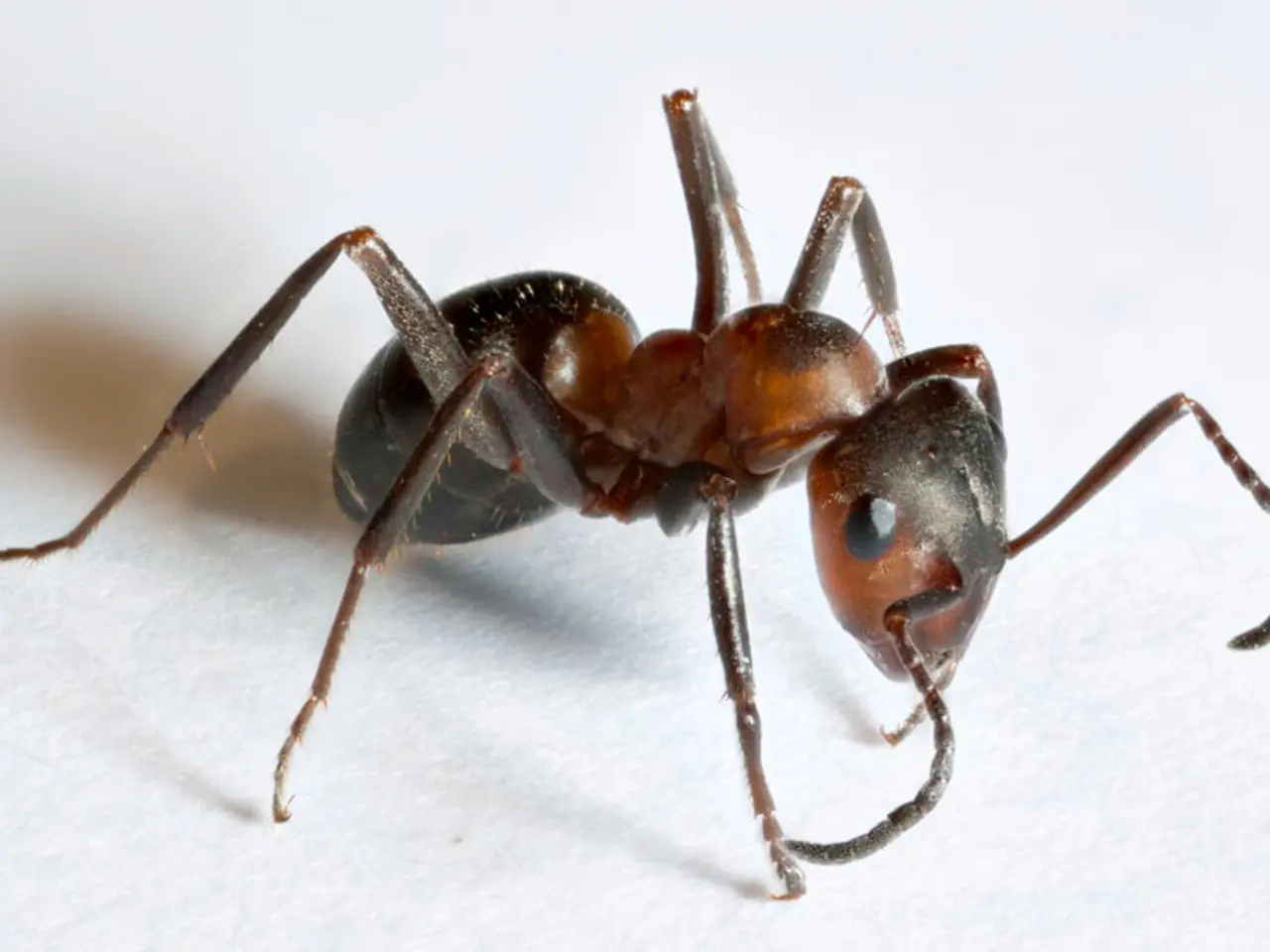DIY Guide to Carpenter Ant Infestations
In the quest to maintain a pest-free home, identifying and eliminating carpenter ants is essential. These wood-boring insects can cause significant damage to your property, especially during the spring and summer months.
Identification and Location
To spot carpenter ants, look for telltale signs such as carpenter ant frass - a mixture of light-colored sawdust, insect body parts, pupal cocoons, and soil. Fresh frass matches the host wood color, while darker, brownish frass suggests the ants are in decayed or moisture-damaged wood. Kick-out holes in wood, specialized openings created by carpenter ants to expel frass, and smooth "sandpapered" tunnels following the wood grain without mud are other indicators. Frass piles near baseboards, windows, door frames, or wooden structures, especially around moist or rotting wood, are common nesting areas.
Homemade Non-Toxic Bait Preparation and Use
A DIY solution for eliminating carpenter ants involves using a borax and sugar bait. To prepare, dissolve about 1 teaspoon of borax in 1 cup of a sugar solution, such as 25% sugar water, to make a roughly 1% borax concentration. Alternatively, mix borax with peanut butter or sugar in a 3:1 ratio, depending on ant food preference. Place the bait near ant trails, nesting areas, and entry points but away from children and pets. Avoid spraying insecticides near bait stations, as chemical repellents can prevent ants from feeding on the bait.
How It Works
Worker ants consume the bait and carry it back to the colony, sharing it with larvae and the queen (trophallaxis), eventually eliminating the entire colony. Initially, you may notice increased ant activity as more workers discover the bait, a sign that the bait is working. Over 3 to 5 days, ant activity should decrease, but full elimination may take several weeks. Maintain bait placement and freshness during this period.
Additional Safety and Effectiveness Tips
Keep bait out of reach of children and pets or use tamper-resistant bait stations if possible. Refresh or replace bait regularly to keep it attractive and effective. If ant activity persists beyond a few weeks, reassess bait placement and concentration, and verify that competing insecticides are not interfering.
By combining careful identification of carpenter ant signs with properly made borax-based sweet baits placed strategically, you can safely and effectively control carpenter ants using homemade, non-toxic methods. If an exposed nest is found, it can be sprayed directly with insecticidal soap to eradicate the colony. Remember, patience is key, as eliminating carpenter ants with this method could take a few weeks.
For professional advice, consult a local exterminator who may offer non-toxic remedies for eliminating carpenter ants. In some cases, it may be necessary to treat behind walls or around bathroom fixtures, sinks, and dishwashers, where carpenter ants often build their nests.
Sources:
[1] https://www.extension.org/publications/Publication/G1176 [2] https://www.extension.org/publications/Publication/ENTFACT-64 [3] https://www.extension.org/publications/Publication/ENY-221 [4] https://www.extension.org/publications/Publication/ENTFACT-64 [5] https://www.extension.org/publications/Publication/ENTFACT-64
Read also:
- Wawa avian tests positive for West Nile disease
- The market for Kraft Lignin is projected to increase at a rate of 7.2% each year until 2034.
- Luxury automaker Mercedes-Maybach unveils its latest edition, the Emerald Isle, at the Monterey Car Week event.
- Exploring the Advantages of Outdoor Group Meditation for Enhancing the Mind-Body Union





